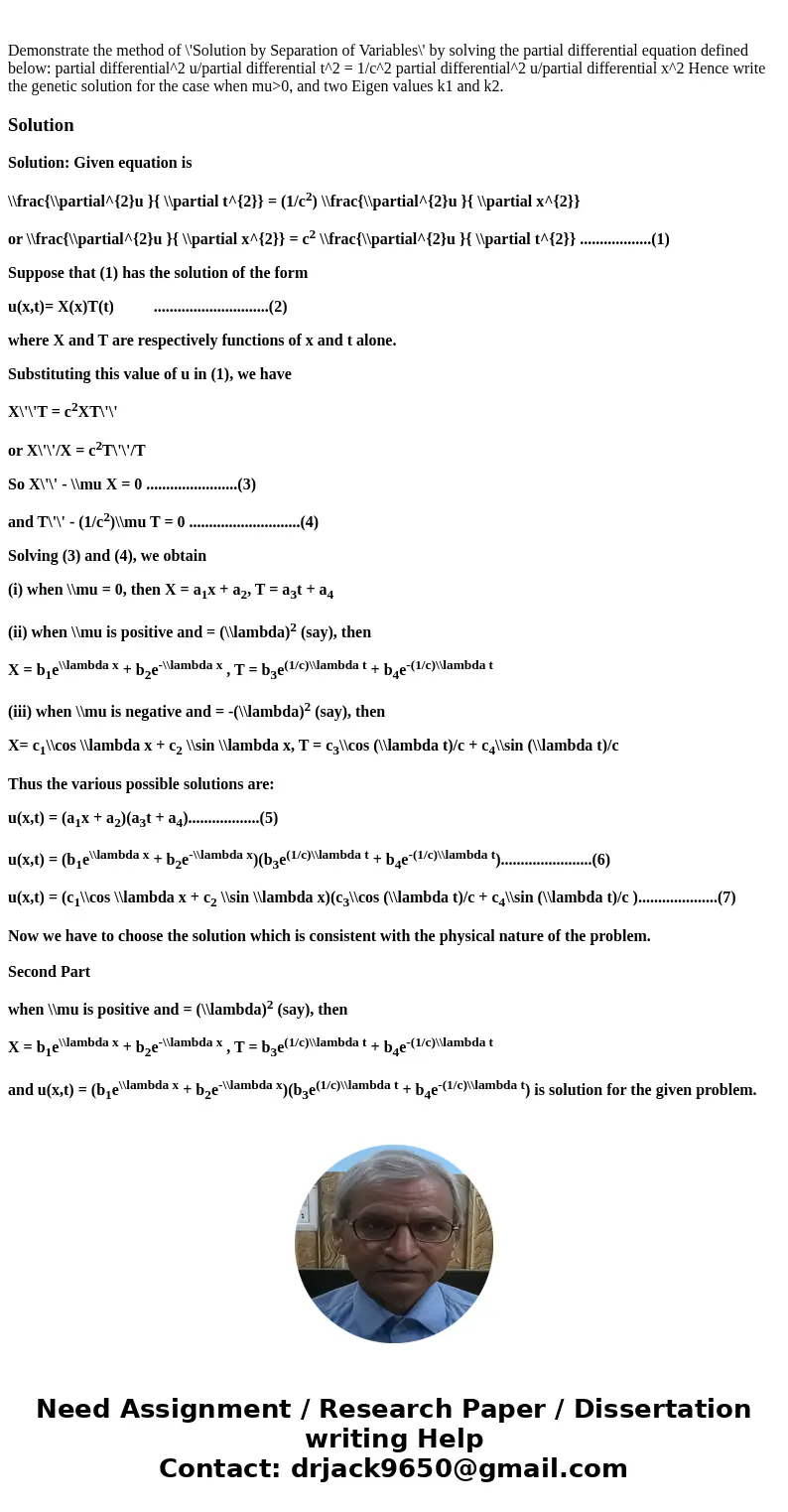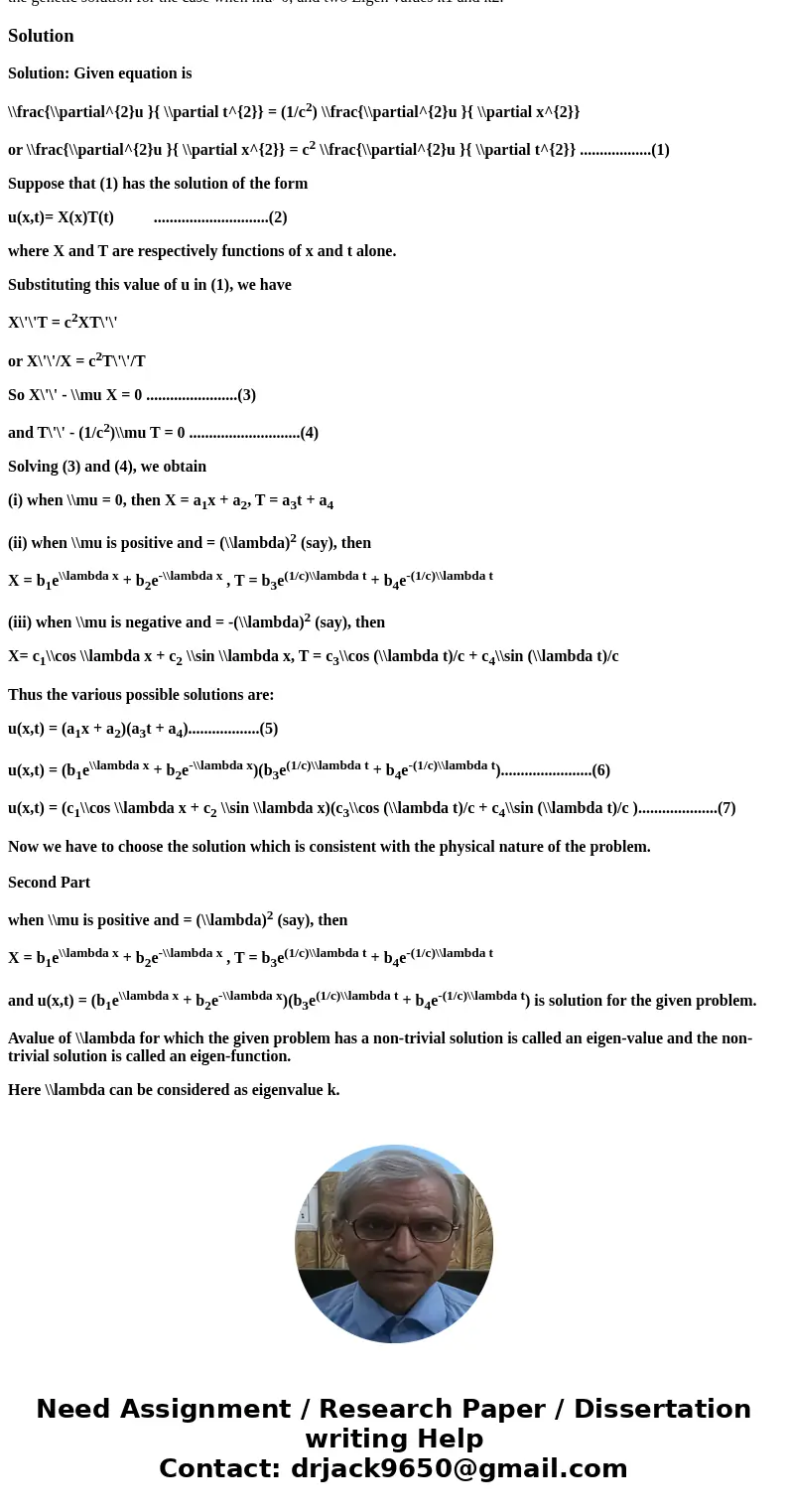Demonstrate the method of Solution by Separation of Variable
Solution
Solution: Given equation is
\\frac{\\partial^{2}u }{ \\partial t^{2}} = (1/c2) \\frac{\\partial^{2}u }{ \\partial x^{2}}
or \\frac{\\partial^{2}u }{ \\partial x^{2}} = c2 \\frac{\\partial^{2}u }{ \\partial t^{2}} ..................(1)
Suppose that (1) has the solution of the form
u(x,t)= X(x)T(t) .............................(2)
where X and T are respectively functions of x and t alone.
Substituting this value of u in (1), we have
X\'\'T = c2XT\'\'
or X\'\'/X = c2T\'\'/T
So X\'\' - \\mu X = 0 .......................(3)
and T\'\' - (1/c2)\\mu T = 0 ............................(4)
Solving (3) and (4), we obtain
(i) when \\mu = 0, then X = a1x + a2, T = a3t + a4
(ii) when \\mu is positive and = (\\lambda)2 (say), then
X = b1e\\lambda x + b2e-\\lambda x , T = b3e(1/c)\\lambda t + b4e-(1/c)\\lambda t
(iii) when \\mu is negative and = -(\\lambda)2 (say), then
X= c1\\cos \\lambda x + c2 \\sin \\lambda x, T = c3\\cos (\\lambda t)/c + c4\\sin (\\lambda t)/c
Thus the various possible solutions are:
u(x,t) = (a1x + a2)(a3t + a4)..................(5)
u(x,t) = (b1e\\lambda x + b2e-\\lambda x)(b3e(1/c)\\lambda t + b4e-(1/c)\\lambda t).......................(6)
u(x,t) = (c1\\cos \\lambda x + c2 \\sin \\lambda x)(c3\\cos (\\lambda t)/c + c4\\sin (\\lambda t)/c )....................(7)
Now we have to choose the solution which is consistent with the physical nature of the problem.
Second Part
when \\mu is positive and = (\\lambda)2 (say), then
X = b1e\\lambda x + b2e-\\lambda x , T = b3e(1/c)\\lambda t + b4e-(1/c)\\lambda t
and u(x,t) = (b1e\\lambda x + b2e-\\lambda x)(b3e(1/c)\\lambda t + b4e-(1/c)\\lambda t) is solution for the given problem.
Avalue of \\lambda for which the given problem has a non-trivial solution is called an eigen-value and the non-trivial solution is called an eigen-function.
Here \\lambda can be considered as eigenvalue k.


 Homework Sourse
Homework Sourse